Types of fish cockerels
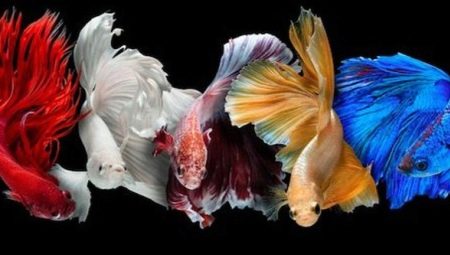
At the beginning of the 19th century, in Siam, residents found in the muddy waters of stagnant lakes a gray nondescript fish with small fins, which has a rather aggressive character towards individuals of its species. People were interested in the fighting qualities of small fish, and Pla Kat, or biting fish, began to be used for tournament fish fights. The most successful representatives of the fish were used to produce offspring.
In the process of selection, the first individuals with an elongated tail were obtained, which was interestingly revealed during the manifestation of aggression or mating games. Due to their fighting nature and beautiful tail, the fish were associated with domestic cockerels, so they began to be called - Siamese cockerel fish (by origin).
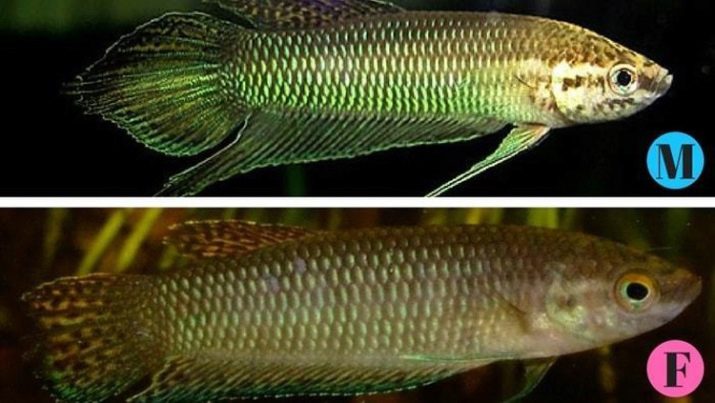
Today, connoisseurs of cockerels are not very interested in her fighting qualities, but they highly appreciate the chic appearance. Over the years, the nondescript fighting fish has become a desirable decoration for the aquarium, acquiring a rich tail and fins and a variety of colors.
Classification of fish by body size
In its natural environment, the cockerel has a grayish olive color with longitudinal or transverse stripes and small rounded fins. The length of an adult fish is about 40-50 mm. Females are slightly smaller than males and are colored paler. Males grow up to 5 cm, females - no more than 4 cm.
The fish found in aquariums around the world are artificially obtained.
Aquarists have been breeding Siamese cockerels for over 150 years, having received more than 10 species of fish, differing in size and shape of fins, in different color options, turning a nondescript individual into a true decoration of a home reservoir.

The fishes, shimmering in the light with all the colors of the rainbow, leave no one indifferent.
Species of individuals according to the shape of fins
The special pride of the domesticated fighting fish is the shape and size of its fins, which the male fluffs up very beautifully, caring for the female or threatening potential invaders of the territory.
Professional aquarium fish breeders and breeders, creating a trade description, the cockerels are divided into species according to the shape of the tail and fins, distinguishing several groups.
- Crescent-tailed fighting fish or halfmoons. Halfmoons have a large, veiled tail, shaped like an open fan or crescent moon. When opened, the extreme rays of the caudal fin diverge by 180 °, forming a perfect semicircle. The rest of the fins are also longer and fuller than those of other cockerel species. When the halfmoon unfolds his fins at full strength, it is impossible not to admire the veil that surrounds him.
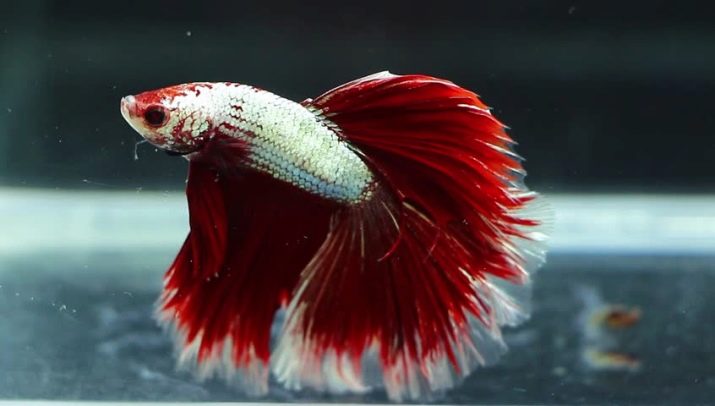
- Crown-tailed cockerels. The unique large, veiled tail, as well as the dorsal and anal fins of the crown-tailed fighting fish, with their shape dissected into separate rays, resemble a royal crown. There are three types of crown-tails, distinguished by the quality of the protruding rays. These are fish with a single ray, in which the shape of the open fins resembles a comb. There are fish with double beams. In such fish, the elongated rays of the tail are connected in pairs by a membrane, forming a multitude of "swallow's tails". The third type of crown-tails differs from other representatives by a tail consisting of paired elongated rays crossed at the ends.
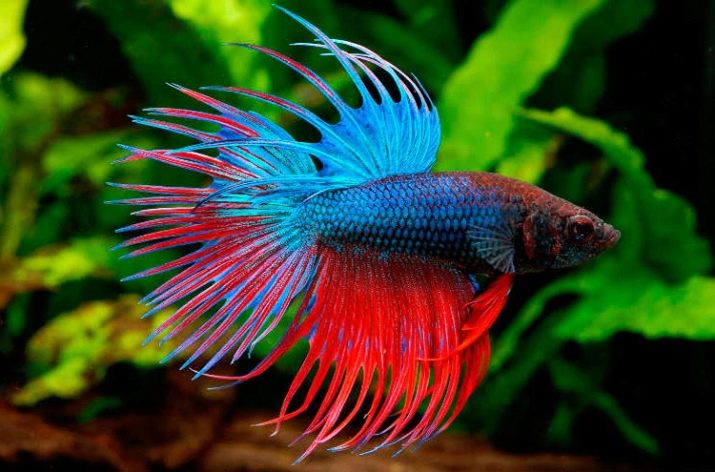
- Veil-tailed or common bettas have long, veiled tail and fins. Veil-tails do not have such luxurious plumage compared to other species of cockerels, but Siamese cockerels are the ancestors of other species of Betta splendens. The reason for this was the fact that the first hybrids obtained from wild representatives were veiled-tailed fish.

- Two-tailed fighting fish has a large, veiled tail, split in two to the base.
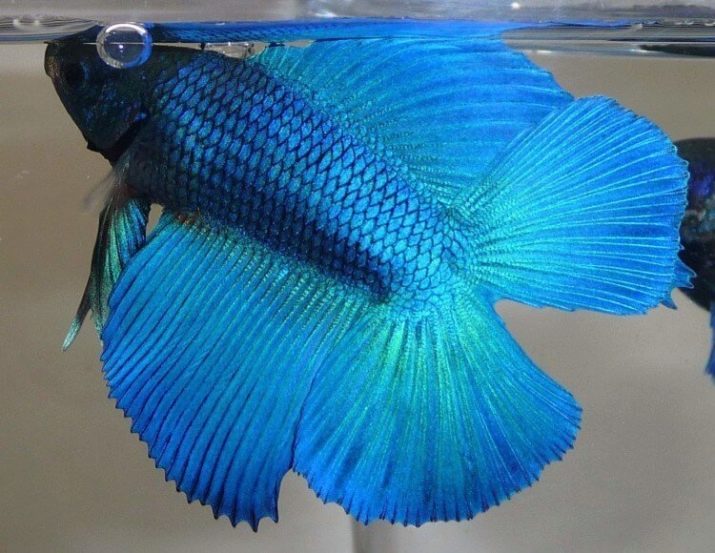
- Round-tailed cockerels belong to the group of short-tailed fighting fish. The fan-shaped round tail and fins commensurate with it do not have much pomp, but this does not make them look worse than the rest.
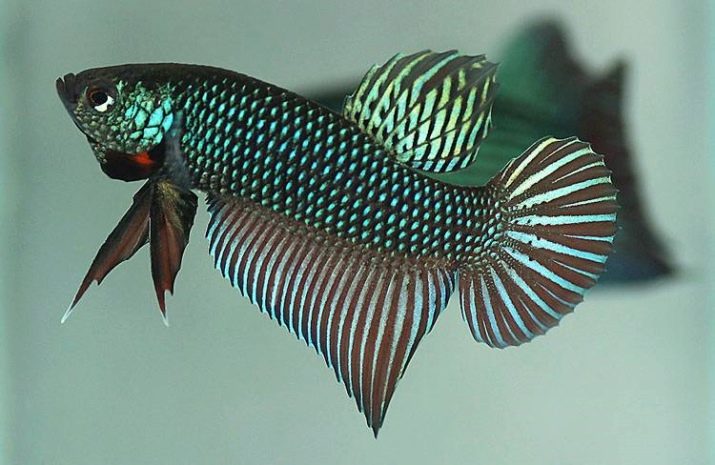
- Brush-tailed cockerel has a second name - spear-tail - because of the shape of the tail, which resembles the shape of a wide pike or an artist's brush.
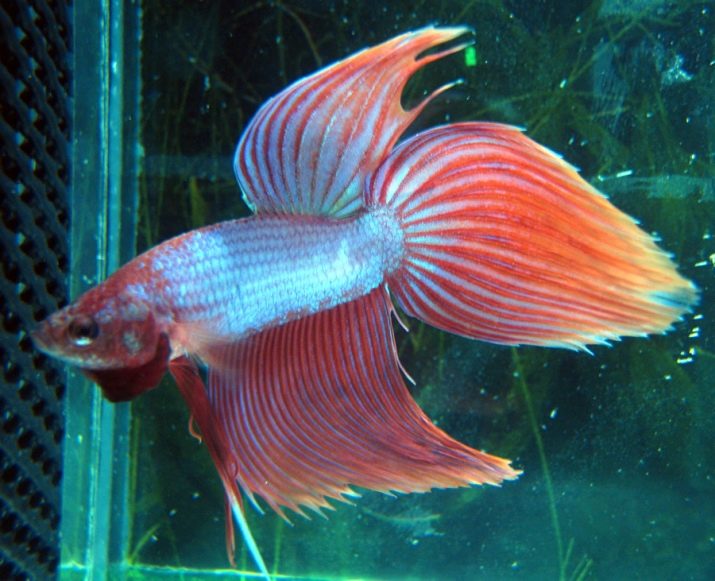
- Fagotail Betta boasts a chic long tail and a dorsal tail with anal fins, wide trains that develop behind its back.
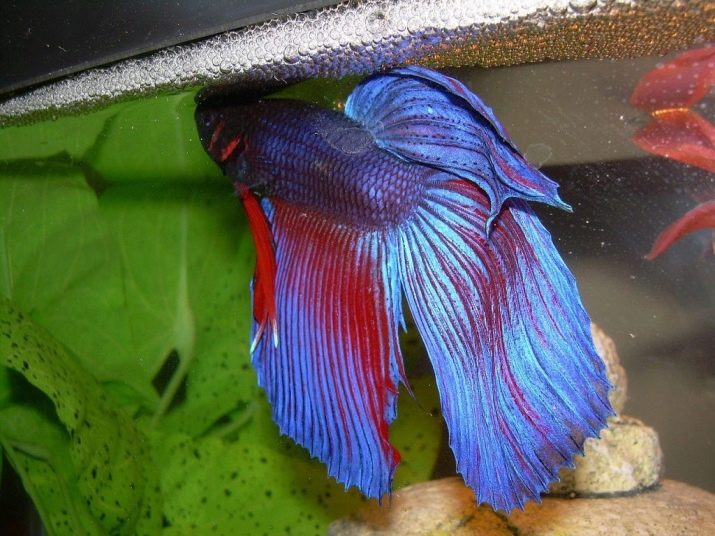
- In poster or short-tailed cockerels short fan tail and elongated fins. The anal fin has a pointed shape elongated towards the tail. This species is closest to the wild Betta in both appearance and character.
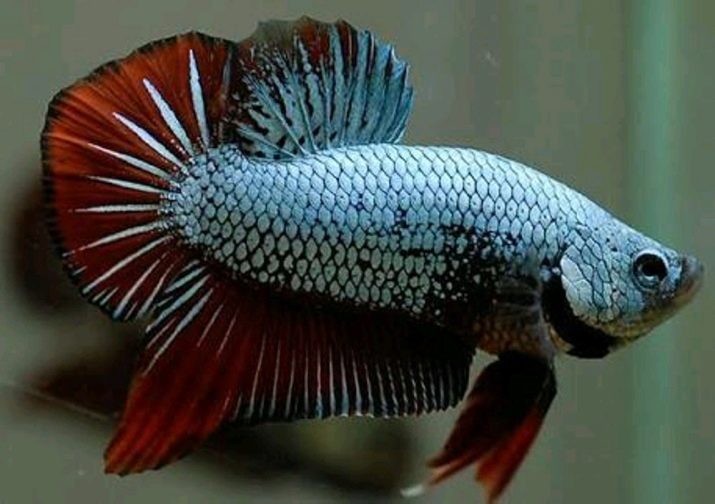
- Delta-tailed or delta cockerels in an excited state, they resemble the outline of a hang glider. They have a semicircular tail and a rounded dorsal fin of medium length; the anal fin is slightly longer and slightly extended towards the tail. In addition to the delta, there is also a super delta with an elongated tail and fins.

- Cockerel with the names Dumbo, goofy, eared Dumbo has unusual pericabranal fins, shaped like an elephant ear. Most likely, this name was given to the fish in honor of the character of the Disney cartoon about the baby elephant Dumbo the idiot, who could fly with his ears. Dumbo is a new direction in the development of the species with an emphasis on increasing the lateral fins, the volume of which is several times the size of the head.
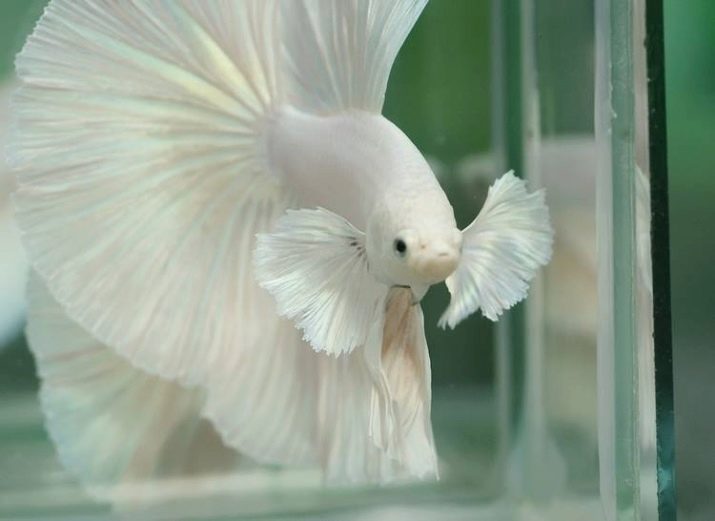
- Giant cockerel or a giant differs from other representatives of its species by its truly royal size. An adult representative of short-tailed giants reaches a length of 75 mm by the age of 8 months and continues to grow up to a year. The fish continues to increase its body weight for some time after the cessation of growth.Among the royal cockerels, there are both short-tailed posters and crescent-tailed posters. Veil-tails and crown-tails are very rare.
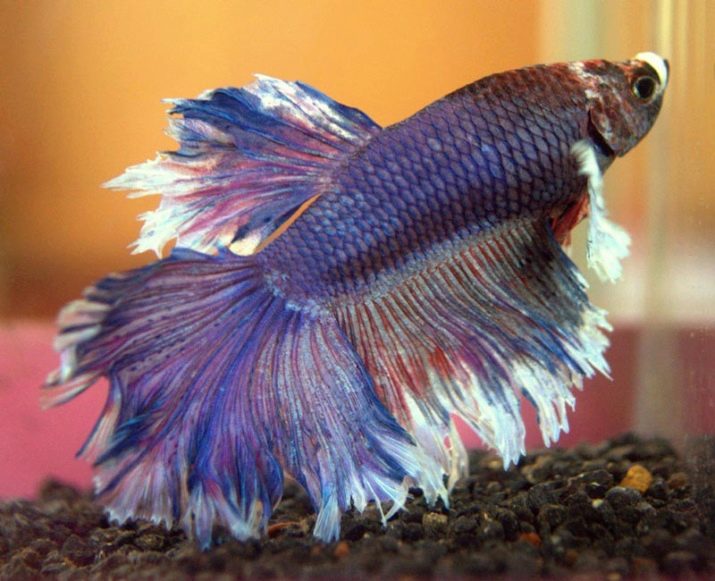
Giant bettas are obtained by breeding green fighting fish, therefore available colors for this type of fish are purple, blue, green, red with blue or green.
Overview of breeds by color
But not only gorgeous tails and fins make the cockerel a decoration of the aquarium.
A wide variety of colors and their combinations - this is what makes the cockerel stand out against the background of other ornamental fish.
There are three color options:
- monochromaticwhen all the fish are the same color;
- bicolorwhen the body of the fish is of the same color, and the tail and fins are completely or partially different;
- multicolor individuals are painted in different colors with a transition from light to dark or vice versa.
There are also dragon fish with a more powerful body and colored scales of a silvery metallic shade, reminiscent of chain mail. Most often among the dragons there are poster-type cockerels with a contrasting edging of the tail and fins.
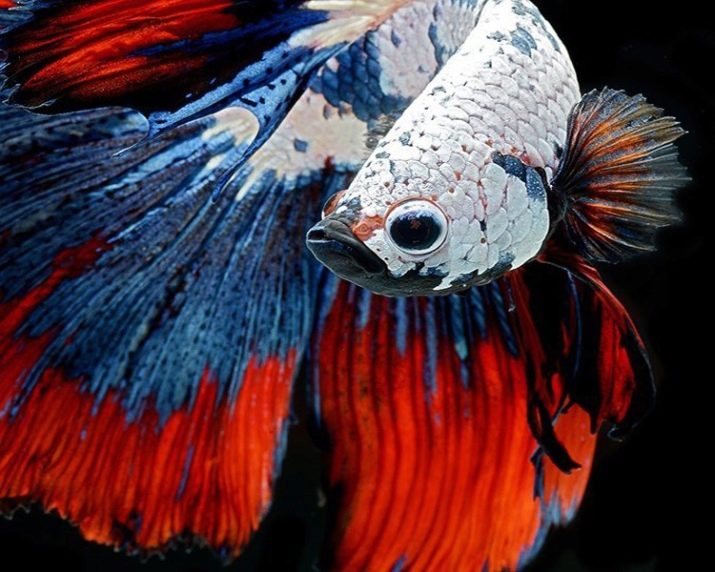
Monochromatic
Among monochromatic cockerels, there are individuals painted in white, blue, green, red, blue, purple, yellow and orange. You can find gold and black in colorful fish.
In addition to uniformly colored fish, there are single-colored individuals with translucent fins. This color is called "butterfly".
Fish of “mask” color can also be classified as monochromatic, in which the head has a darker shade in relation to the rest of the body.
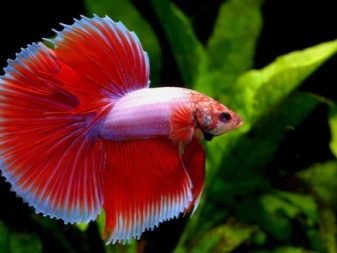
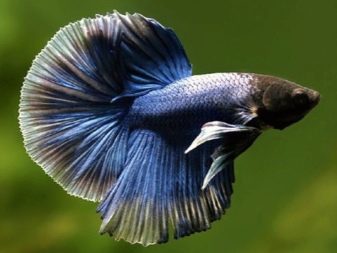
Bicolor
Two-colored fighting fish have a body that is evenly colored in one color, and fins and tail in another. Fish can have a variety of color combinations, such as red and blue, blue and gold, or black with red splashes. There can be a great variety of options.
Cambodian males have a relatively pale body with red or green fin systems.

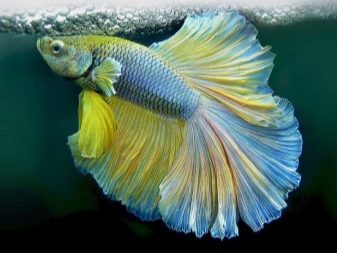
Multicolor
The most colorful representatives of Siamese cockerels have a bright multicolored color. Various combinations of red, blue, yellow, green and other colors of the rainbow spectrum in the form of spots, stripes or edging make it possible to obtain a decorative fish of a unique color.
The most variegated, multicolored color, reminiscent of a harlequin costume, is called marble. Such a fish will be noticeable in any situation.
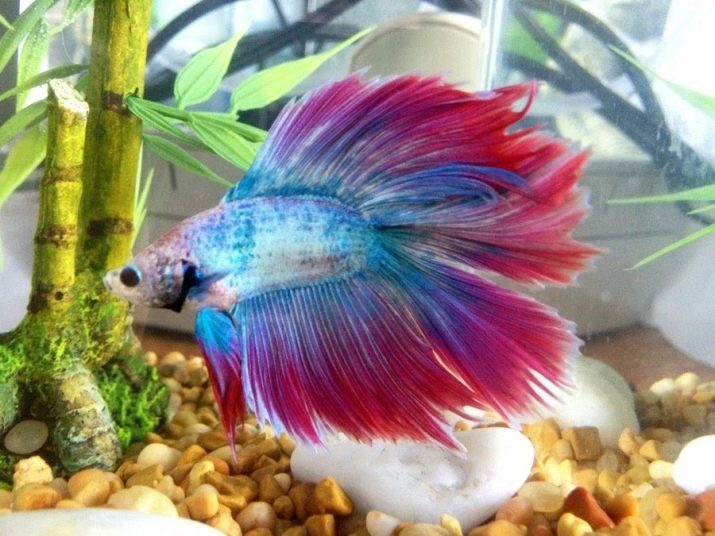
It is difficult to describe all the possible color combinations present in the coloration of a cockerel, especially since breeders are constantly working on new color options.
How to choose?
Males are relatively unpretentious fish, suitable for keeping in a small aquarium, they can be purchased even by beginners in the aquarium hobby.
The unpretentiousness of the fish is expressed in the fact that it does not require additional aeration and filtration of water, having adapted to live in turbid and oxygen-poor water, using atmospheric air for breathing.
But no matter how unpretentious fish the cockerel is, for a comfortable stay he needs to have a house of sufficient volume:
- for an ordinary fighting fish, the living volume is calculated from 7 liters per individual;
- for giant cockerels, you already need about 10 liters of water per fish.
If the future owner is not going to breed cockerels, then it is better to keep only one cock in an aquarium with a volume of up to 25-30 liters.
This fish easily tolerates loneliness, while with other representatives of its species there can be fierce fights, ending with ripped fins, torn tails and even the death of brawlers.
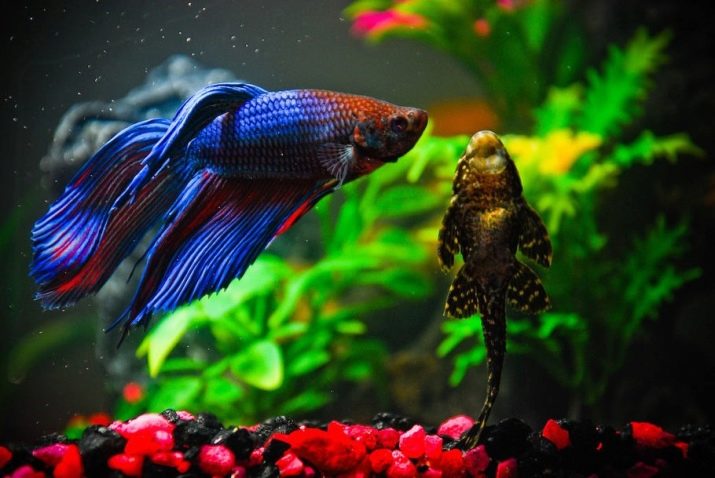
Particular attention should be paid to the neighbors of the fighting fish. Cockerels get along well next to small, peaceful species: zebrafish, neons, swordtails, tetras and catfish.
Too small fish are not suitable for neighbors to the fighting fish, since the males will chase them, not allowing them to reach the feeder.
The bright colors of representatives of other breeds of ornamental fish will irritate the cockerels and lead to fights.
But you shouldn't keep cockerels with Sumatran barbs, since these peaceful-looking fish love to rip out their gorgeous fins with their veil-tails.
Cyprinids are not suitable neighbors for Betta splendens, as they have different water temperature requirements. Goldfish prefer cool water, while males need an ambient temperature close to + 25 ° C.
It is easiest for bettas to get along with other fish in large aquariums and at the same time settling in a new place of residence of fish in infancy.
You can watch the video about the fighting fish "Siamese cockerel" below.








